A show of hands: the future of Chanel
Chanel is marking the post-Lagerfeld era with a clear commitment to the creative director’s legacy.

The future of Chanel. It’s a topic many commentators have been discussing since the death of the fashion house’s long-time creative director, Karl Lagerfeld, on February 19 at the age of 85. While the continuation of Lagerfeld’s design legacy has been assured with the appointment of Virginie Viard, who worked beside him for 30 years, to the position of artistic director, there is still much speculation about the future of the brand as a business.
The brand has been privately owned by the secretive Wertheimer family since 1971, which first acquired a stake in Gabrielle Chanel’s business in 1924, and the death of its creative director of 36 years has renewed talk about a possible change in its ownership structure. Talk of a potential sale started in 2017, when the private company released its financial statements for the first time in an attempt to dispel rumours that sales were slowing. Revenue in 2017 was $US9.6 billion ($14 billion), making it one of the biggest brands in the luxury industry.
But the release also had the effect of igniting speculation that a sale was on the cards and letting potential buyers know they would need very deep pockets — some analysts estimated that the valuation of Chanel could be as high as $50 billion. Several sale scenarios emerged at the time. Would it be sold to a luxury conglomerate such as Bernard Arnault’s LVMH? Or merge with a smaller player such as Kering, or the Swiss group Richemont? Perhaps the Wertheimers would sell to a private equity company? Or pursue a listing on the stock exchange? Despite the various scenarios, the company’s president of fashion, Bruno Pavlovsky, dismisses all of the above as merely “fake news”. Chanel is not for sale, he says.
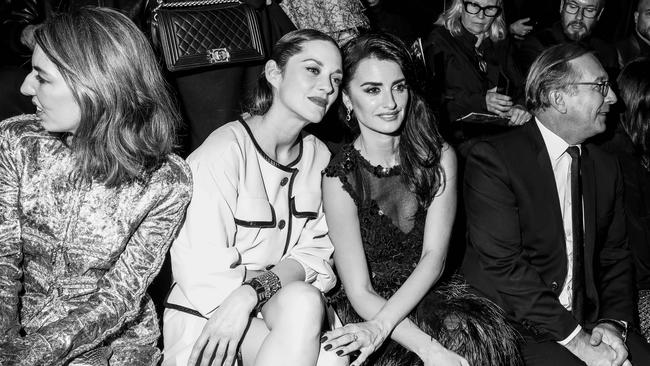
Whatever the motivation for releasing its financial information, change is inevitable at Chanel with the passing of the designer that turned the moribund brand into a fashion and beauty powerhouse. There will never be another designer like Lagerfeld — a polymath who, in addition to his role as Chanel’s creative director, also designed fashion collections under his own name as well as for the Italian brand Fendi, for which he worked from 1965 (a three-year contract with a luxury house is standard for a designer today). In his spare time, Lagerfeld was also a talented photographer and filmmaker, and shot all of Chanel’s advertising campaigns. Viard’s appointment as his successor was a pledge of continuity by the brand — a point reinforced by the pair taking a bow together at the end of the Chanel’s 2019 Métiers d’Art collection show at the Metropolitan Museum of Art in New York in December.
It was the last time Lagerfeld would appear at the end of a Chanel fashion show — at the haute couture collection show in January in Paris he was conspicuously absent. But the 2019 Métiers d’Art collection was also something of a beginning for Chanel.
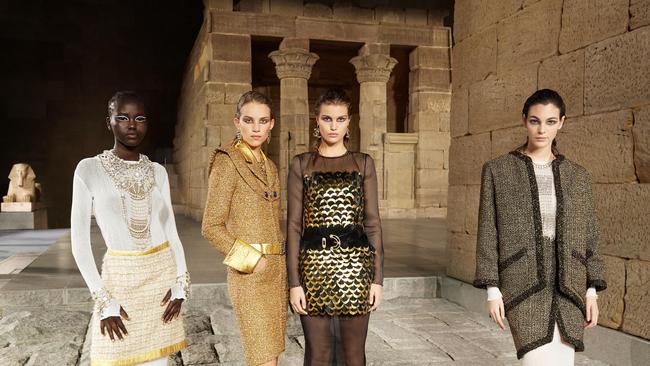
The collection showcases the skills and craftsmanship of the 26 independent ateliers the company has acquired since 1985, and which it now houses under the umbrella company Paraffection. It falls somewhere between ready-to-wear and haute couture, given the often time-consuming work — much of it done by hand — that goes into the individual pieces in the collection, and is shown outside the official fashion show schedule in December each year. By harnessing the skills of its various ateliers in the service of Métiers d’Art, Chanel produces a fashion collection unique in the luxury world — no other brand creates anything like it.
Métiers d’Art is also a travelling fashion show of sorts. It has been shown away from the company’s home base of Paris in Edinburgh, Dallas, Rome, Shanghai and Cuba, among other locations, and each time Lagerfeld drew inspiration from the setting. For the 2019 collection in New York, it wasn’t so much the Big Apple that was his inspiration but Egypt: the show took place in the Temple of Dendur in the Egyptian wing of the Metropolitan Museum. In a departure from its ready-to-wear and couture collections, which are shown in the Grand Palais in Paris on sets that get more elaborate each season — a supermarket, a train station, an alpine village, even a beach with real sand and lapping waves — Chanel chose to let the setting, which dates from 10BC, speak for itself.
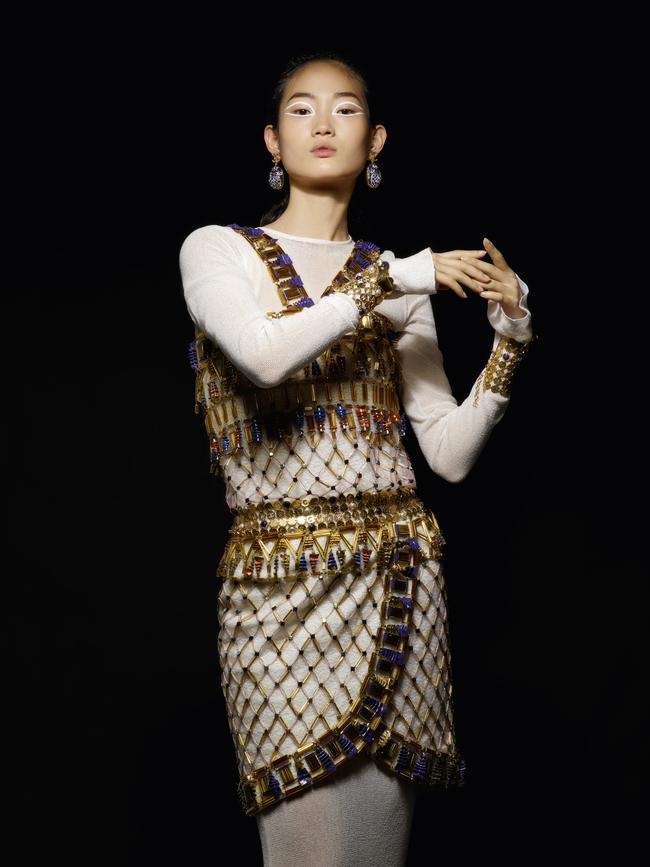
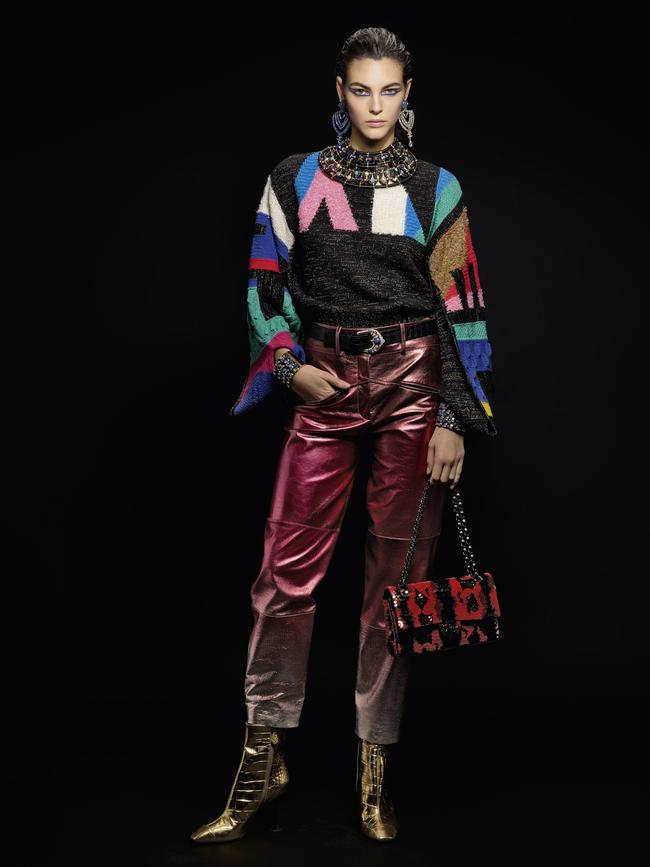
The models were almost dwarfed by the temple, but there was no confusion as to the theme. Shades of the desert in gold and sandstone were in abundance — even the iconic Chanel bouclé jacket was given the Egyptian touch, with threads of vivid blue interwoven with gold. Miniskirts referenced the wrap-style skirts of the Egyptian men in the carvings on the temple’s walls. There were large, ornamental collars, scarab beetles on everything, and lots of gold. A small evening bag was shaped like a pyramid and gold hats resembled turbans. The only thing missing was the Bangles singing Walk Like An Egyptian.
However, the aspect that represented a new beginning for Chanel was actually not on the catwalk that night. In the days before the show, Chanel announced it would no longer use what are known as “exotics” in its collections. There would be no snakeskin, crocodile, stingray, lizard or even fur. The reason for the change, Pavlovsky told WISH on the eve of the show, was that the company was finding it increasingly difficult to source exotics in a manner that matched its ethical standards.

“You know we have been doing exotics now for quite a long time,” Pavlovsky said. “But it’s becoming more and more difficult for many reasons, and at the end of the day we have more and more questions from our customers about the traceability and the ethics behind the exotics and that’s the reason we have decided to communicate this [change] now.” Other brands, including Gucci, Burberry, Versace, Prada and Michael Kors, have banned the use of fur. Chanel’s move to ban exotics in its collections makes it the biggest player in the luxury industry to eschew the use of some animal materials.
To ensure their supply chain of exotic skins and to exert control over their ethical production, other luxury companies have invested in their own sourcing. Kering, the parent company of Gucci, Saint Laurent and Balenciaga among other brands, invested in a python farm in Thailand in January 2017, and Hermès and LVMH also operate crocodile production facilities in Queensland and the Northern Territory, among other places.
Chanel, on the other hand, plans to replace exotics with human craftsmanship. “The role of the Métiers d’Art collection can be to offer new high-end products in handbags and leather goods that are the result of our artisans and our handcrafts,” says Pavlovsky.
Products made with exotics are the highest-priced items for luxury brands and therefore have the highest margins, which means the ban could affect the company’s bottom line. Pavlovsky, however, is confident that other precious materials — ones made by hand — can make up the difference. “You know the value of an exotic bag is mainly the value of the skin, it’s not the value of the craftsmanship,” he says. “The value of some of the bags you will see tonight is because of the craftsmanship and not because of the material, and for me that’s a big difference.
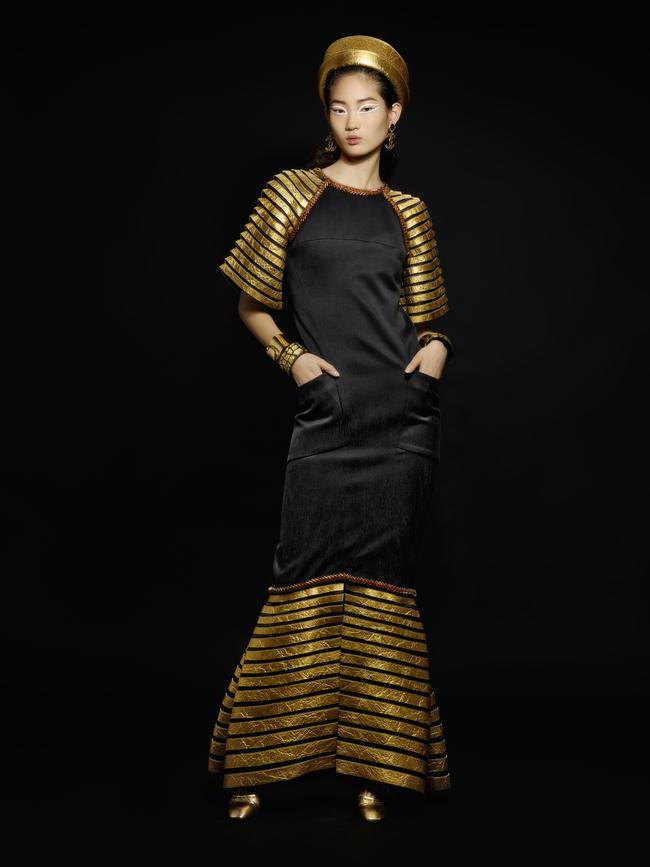
“It’s like in ready-to-wear — our high-end offering is because of the craftsmanship involved and not because of the cost of the fabric. It’s the artisans who are making the value for our product.”
“We have in our collections now what we call collector bags — you know, very unique, with a lot of craftsmanship — and they are also very expensive. And what we want to do now is even more of that. This will be a way to compensate for what we will not do on the exotics. We are not sure how long it will take to replace the exotics in a dollar value, but we have been talking about it internally for quite a while and we are quite confident in our capacity to come up with new types of product.”
Several of the company’s ateliers worked together to produce the Egyptian-inspired 2019 Métiers d’Art collection. The maison Goossens (goldsmiths since 1950) made handcrafted buttons cast in resin and lapis lazuli, some in the shape of scarab beetles. Goossens also brought its decorative touch to the shoes and boots made by Massaro (shoemaker since 1894), inlaying heels with coral and turquoise enamel motifs and embellishing them with jewels.
Embroidery from Lesage (embroiderer since 1858 as well as a tweed maker) incorporated metallic and multicoloured bugle beads from Goossens in designs that fan out across garments like sunbeams, as well as patterns that resemble the palms of a papyrus in a mix of glass beads and metallic thread. Desrues (costume jewellery since 1936) created collars and earrings from hammered metal, setting them with pearly cabochons and bright lapis lazuli. Other styles such as cuffs, brooches and medallions featured renderings of scarab beetles.
Ten artisans from the plumassier Lemarié (feather and flower makers since 1880) worked in tandem, hand-applying rows of feathers to Lagerfeld’s creations. Lemarié also hand-painted feathers in navy, turquoise, red and gold, before cutting and then assembling them in geometric reliefs on garments. Black tulle and organza was delicately accordion pleated by Lognon (pleater since 1853) and added to the skirts and sleeves of several dresses.
A crystal depiction of New York City skyscrapers on the sleeves, collars and hems of a handful of dresses was executed by the Parisian embroiderer Montex (established in 1939). The turban-style hats with a high crown and folded brim in gold leather, tweed and black leather made to look like crocodile were produced by Maison Michel (hatmaker since 1936).
According to Pavlovsky, the value of the work done by the ateliers under the Parrafection umbrella will be further enhanced when a new building by the architect Rudy Ricciotti opens at the end of next year. It will house most of the ateliers under one roof.
The building, near Porte d’Aubervilliers, will make them and their work “much more visible in Paris”, says Pavlovsky. “They will have this unique location, and we will be able to have people from outside come and see what we are doing, which is quite important. And because there are a lot of them, I’m sure they will find better synergies in the way they work together.”
The ateliers under the Parrafection umbrella, while owned by Chanel, operate independently and are free to do work for other fashion houses.
“We want to keep them independent because they need to continue to develop what they are doing, but I think being together they will be able to offer a strong visibility to the Métiers operations,” says Pavlovsky.
Chanel is looking to make other acquisitions of ateliers, he says, and as this division of the company grows it should grow in expertise as well as size. Last year, for example, Chanel acquired the British swimwear brand Orlebar Brown, founded in 2007, from its original founders.
“We definitely need to be stronger in some fields, but the most important thing for us is to have this expertise near the studio so we can continue at Chanel to develop and have the best collections each year,” says Pavlovsky. “Because, you know, these types of products, they are created by hand, which means the possibilities are kind of endless in what you can produce. We want the value of our products to be the work of our craftsmanship, not the value of the skin of an animal.”


To join the conversation, please log in. Don't have an account? Register
Join the conversation, you are commenting as Logout